Solar eclipse of April 21, 2069
| Solar eclipse of April 21, 2069 | |
|---|---|
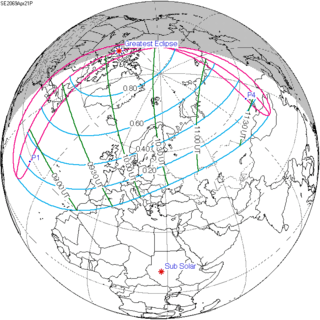 Map | |
| Type of eclipse | |
| Nature | Partial |
| Gamma | 1.0624 |
| Magnitude | 0.8992 |
| Maximum eclipse | |
| Coordinates | 71°00′N 101°18′W / 71°N 101.3°W |
| Times (UTC) | |
| Greatest eclipse | 10:11:09 |
| References | |
| Saros | 120 (64 of 71) |
| Catalog # (SE5000) | 9663 |
A partial solar eclipse will occur on April 21, 2069. A solar eclipse occurs when the Moon passes between Earth and the Sun, thereby totally or partly obscuring the image of the Sun for a viewer on Earth. A partial solar eclipse occurs in the polar regions of the Earth when the center of the Moon's shadow misses the Earth.
Related eclipses
Solar eclipses 2069-2072
Each member in a semester series of solar eclipses repeats approximately every 177 days and 4 hours (a semester) at alternating nodes of the Moon's orbit.
| 120 | April 21, 2069 Partial |
125 | October 15, 2069 Partial |
| 130 | April 11, 2070 Total |
135 | October 4, 2070 Annular |
| 140 | March 31, 2071 Annular |
145 | September 23, 2071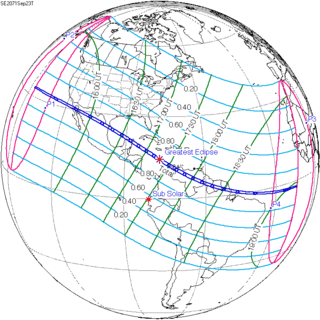 Total |
| 150 | March 19, 2072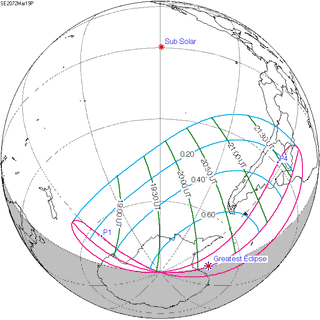 Partial |
155 | September 12, 2072 Total |
Saros 120
It is a part of Saros cycle 120, repeating every 18 years, 11 days, containing 71 events. The series started with partial solar eclipse on May 27, 933 AD, and reached an annular eclipse on August 11, 1059. It was a hybrid event for 3 dates: May 8, 1510, through May 29, 1546, and total eclipses from June 8, 1564, through March 30, 2033. The series ends at member 71 as a partial eclipse on July 7, 2195. The longest duration of totality was 2 minutes, 50 seconds on March 9, 1997.[1]
| Series members 55–65 occur between 1901 and 2100 | ||
|---|---|---|
| 55 | 56 | 57 |
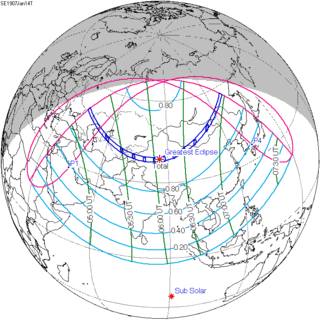 January 14, 1907 |
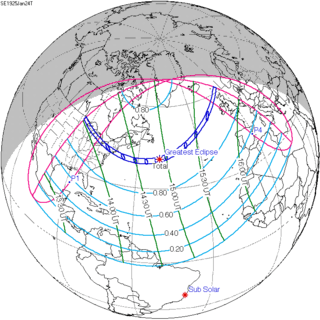 January 24, 1925 |
 February 4, 1943 |
| 58 | 59 | 60 |
 February 15, 1961 |
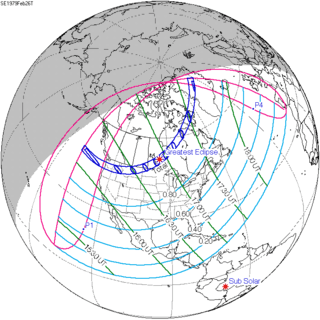 February 26, 1979 |
 March 9, 1997 |
| 61 | 62 | 63 |
 March 20, 2015 |
 March 30, 2033 |
 April 11, 2051 |
| 64 | 65 | |
 April 21, 2069 |
 May 2, 2087 | |
References
| Wikimedia Commons has media related to Solar eclipse of 2069 April 21. |
External links
- Earth visibility chart and eclipse statistics Eclipse Predictions by Fred Espenak, NASA/GSFC
